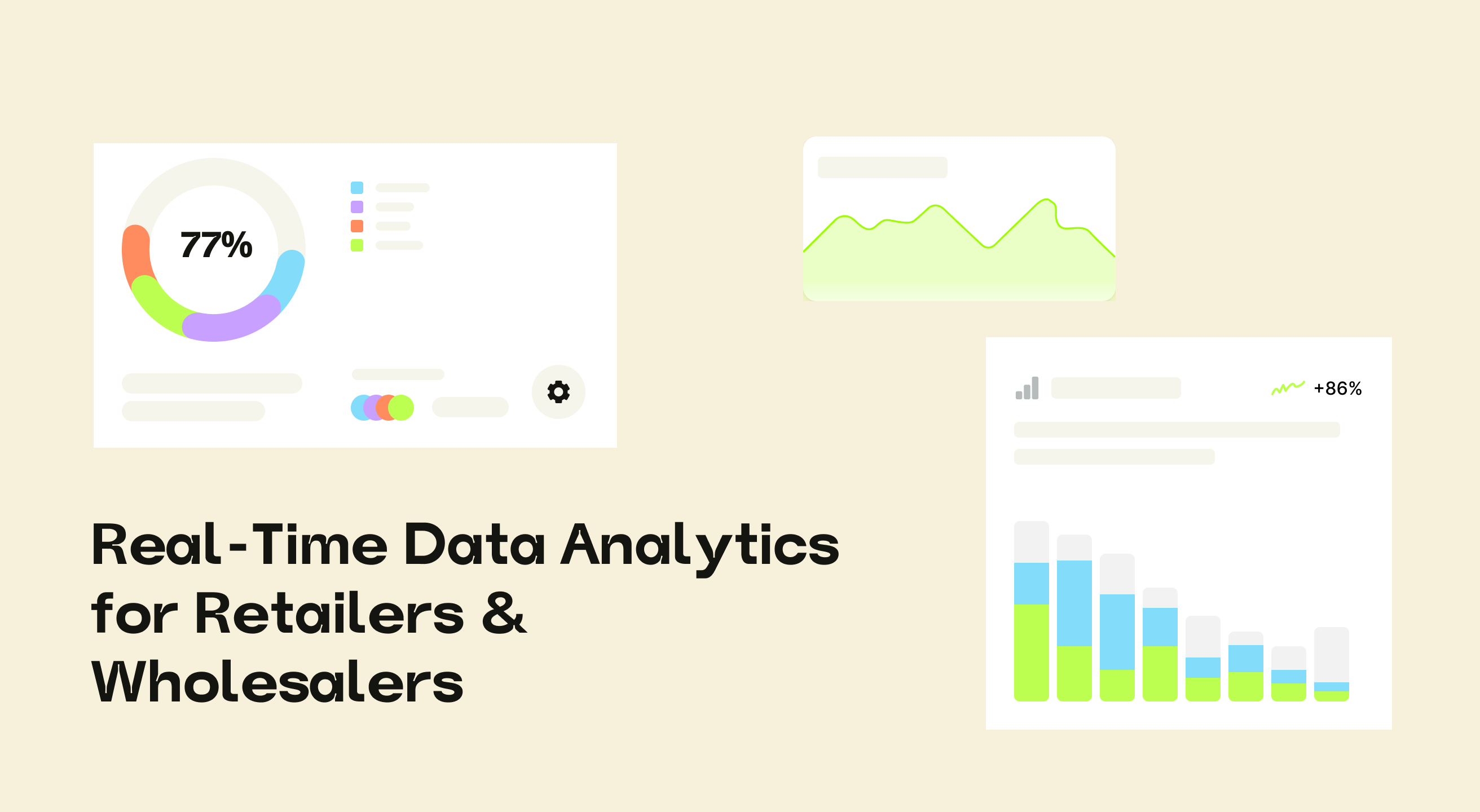Introduction
In today’s fast-paced retail and wholesale environment, waiting hours or days for reports is no longer acceptable. Real-time data analytics gives retailers and wholesalers immediate access to inventory, pricing, sales trends, and competitor moves. Whether you’re running a regional chain or a multi-channel wholesale operation, live data monitoring is key to staying agile and competitive.
In this post, we’ll explore how real-time retail analytics works, the top metrics to track, and how to use these insights to react faster and grow smarter.
Why Real-Time Analytics Matters for E-commerce
Modern e-commerce and wholesale businesses operate in dynamic markets — product availability, pricing, and customer demand can shift instantly. That’s why real-time analytics tools are now essential. They allow teams to:
- Respond instantly to price changes, competitor moves, or stock issues
- Identify sales opportunities or underperforming SKUs before it’s too late
- Automate pricing decisions across categories and regions
- Track customer behavior live during campaigns or flash sales
- Gain visibility across warehouses, sales channels, and store locations
Traditional batch reports can delay decisions by hours or days. Real-time insights eliminate that lag — enabling better decisions, faster.
Top Retail Metrics to Monitor in Real-Time
For retailers and wholesalers, tracking the right real-time KPIs is crucial. Here are some of the most actionable metrics:
- Live Pricing vs. Competitors: See if your prices are above or below market average instantly
- Out-of-Stock & Low-Stock Alerts: Never lose a sale due to inventory gaps
- Real-Time Conversion Rates: Understand what SKUs convert well under current pricing
- Cart Abandonment Trends: Spot problems in checkout processes live
- Sales Velocity by Product/Category: Quickly identify trending or lagging products
- Geographic Performance: Compare demand across regions to adjust distribution
These metrics enable proactive — not reactive — business decisions.
Real-Time vs Batch Data: Pros and Cons
Both batch and real-time data have their place. Here’s a comparison:
Real-Time Data:
- Speed: Provides instant insights
- Use Case: Ideal for dynamic pricing, live stock tracking, and time-sensitive decisions
- Tools: Uses streaming dashboards, APIs, and real-time alerts
- Pros: React fast to market signals, make decisions in the moment
- Cons: Requires technical setup, integration, and monitoring
Batch Data:
- Speed: Delayed insights (hourly, daily, or weekly)
- Use Case: Best for trend analysis, historical reporting, and financial summaries
- Tools: Typically involves BI tools, ERP system exports, or Excel sheets
- Pros: Easier to implement and has lower infrastructure costs
- Cons: Too slow for fast-moving e-commerce or real-time market reactions
Smart retailers use a hybrid approach — real-time data for execution and batch data for strategy.
How to React to Market Changes with Live Data
Live data allows you to respond instantly to market signals:
- If a competitor drops prices, get notified and adjust yours within minutes
- If a product starts trending, increase stock allocation before it sells out
- If sales suddenly drop, analyze conversion rates or stockouts live
- If customers are abandoning carts, launch a real-time promo
Real-time analytics tools like ScrapeWise or custom dashboards make this automatic. You can set rules to trigger changes, alerts, or internal tasks.
How to React to Market Changes with Live Data (Advanced)
Dynamic pricing is only effective if powered by real-time insights. Here’s how it works:
- Track competitor prices live across platforms and regions
- Match offers to demand spikes during holidays or campaigns
- Analyze promo performance as it happens — not a week later
- Avoid margin loss by automatically stopping discounts when not needed
Retailers who use real-time data to drive pricing decisions often report up to 10–20% margin improvement and faster stock turnover.
Conclusion
Real-time analytics is not just a nice-to-have — it’s the foundation of competitive retail and wholesale strategy. It empowers decision-makers to act on what’s happening now, not what happened yesterday.
Whether you’re optimizing pricing, managing stock, or reacting to market moves, live data gives you the agility your competitors wish they had.

